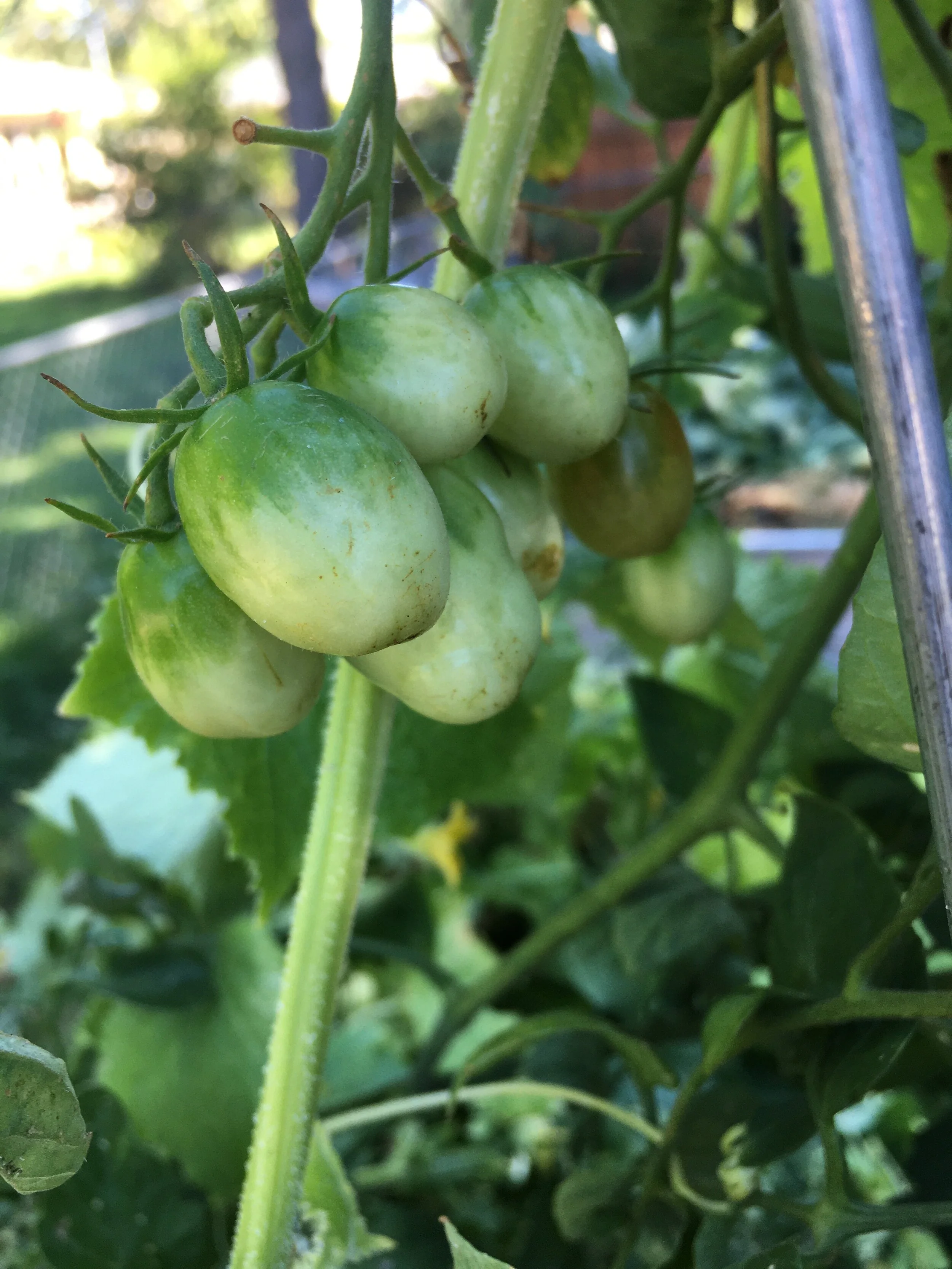Gardening - Cherry Tomatoes
Professional Chef, Amateur Gardener: Learn along with us as we explore growing our own food. Understanding the full life cycle of your ingredients can open up a new world of creativity and comfort when trying new flavor combinations. Picking the veggie or berry right off the vine and enjoying it immediately reminds you how complex, delicious, and satisfying food is.
The Right Conditions
So far, I’ve only been brave enough to start with tomato seedlings. However, if you want to grow tomatoes from seeds, it is recommended to start them indoors a few weeks before the last frost. Be sure to keep the soil evenly moist so the seeds stay happy and germinate to produce seedlings.
Cherry tomatoes can have delicate roots (especially when young), so I was careful and gentle while transplanting the seedlings into the garden. Tomato plants need to be spaced a fair distance apart because they will grow to become quite bushy. Additionally, you may want to consider planting marigolds, dill, or basil near the tomatoes to deter pests.
Tomatoes like slightly acidic soil (6.2 - 6.5 pH) and well-draining, nutrient-rich soil. I added homemade compost when I planted my seedlings and haven’t done any special soil amendments since. Thankfully, once established, tomato plants are pretty easy to keep happy and aren’t too fickle about their soil conditions.
I knew for sure that a tomato cage would be necessary. As the plant grows, I lift the branches through the middle in an attempt to get as many as possible growing out of the top of the cage. This cherry tomato plant got so large that it toppled the tomato cage. To fix this I (with some help) drove a metal stake next to the cage and tied them together. This stake provided all the support needed to keep the plant tall and happy all season long. Learn from my misstep and add your tomato cage support early in the season!
Tomatoes of all kinds love the sun and cherry tomatoes are no different. Be sure to plant your tomatoes in an area that will receive full sun (more than 6 hours each day) for the entire growing season. Hint: Don’t plant your tomatoes on the north side of any other tall plants like corn, brussels sprouts, or trellised veggies. As these veggies grow, they’ll create shade for your tomatoes. If you have adequate space, try to plant these taller veggies further apart or east and west of each other.
Cherry tomatoes thrive in soil that is slightly moist most of the time. They like a nice consistent watering schedule where the soil never gets bone dry, nor oversaturated and waterlogged. As your tomatoes develop and start to turn red, a sign of overwatering is split skins. The fruits are taking in too much water and the building pressure causes the tear.
Maturation and Harvesting
Cherry tomato plants boast cute yellow flowers when they are ready to reproduce. These yellow flowers contain both male and female parts, so they can self-fertilize. That means you do not need to plant two tomato plants in order for the plant to bear fruit. The fertilization happens when the flower moves - by way of insect or wind. If sex was a success, your little cherry tomato will begin to grow out of the center of the flower.
You’ll see a tiny green bud that will continue growing for several days. The fruit grows to its full size before beginning to change color. As the tomato turns to orange and red, it becomes less tart and astringent. If you leave the berries to deepen in color, they will become sweeter with each day on the vine.
Delicious Dishes to feature your Cherry Tomatoes
Brats with Relish
Summer Salad
Avocado Toast
Mediterranean Orzo Salad
Carnitas Pork
Hiking Snack

















